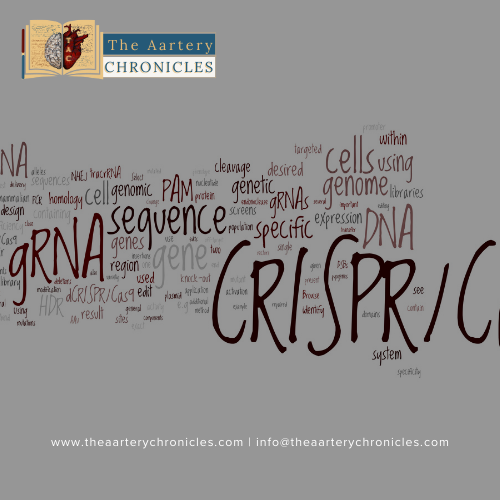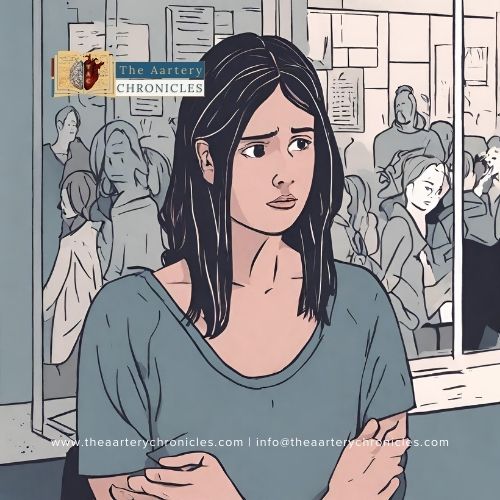
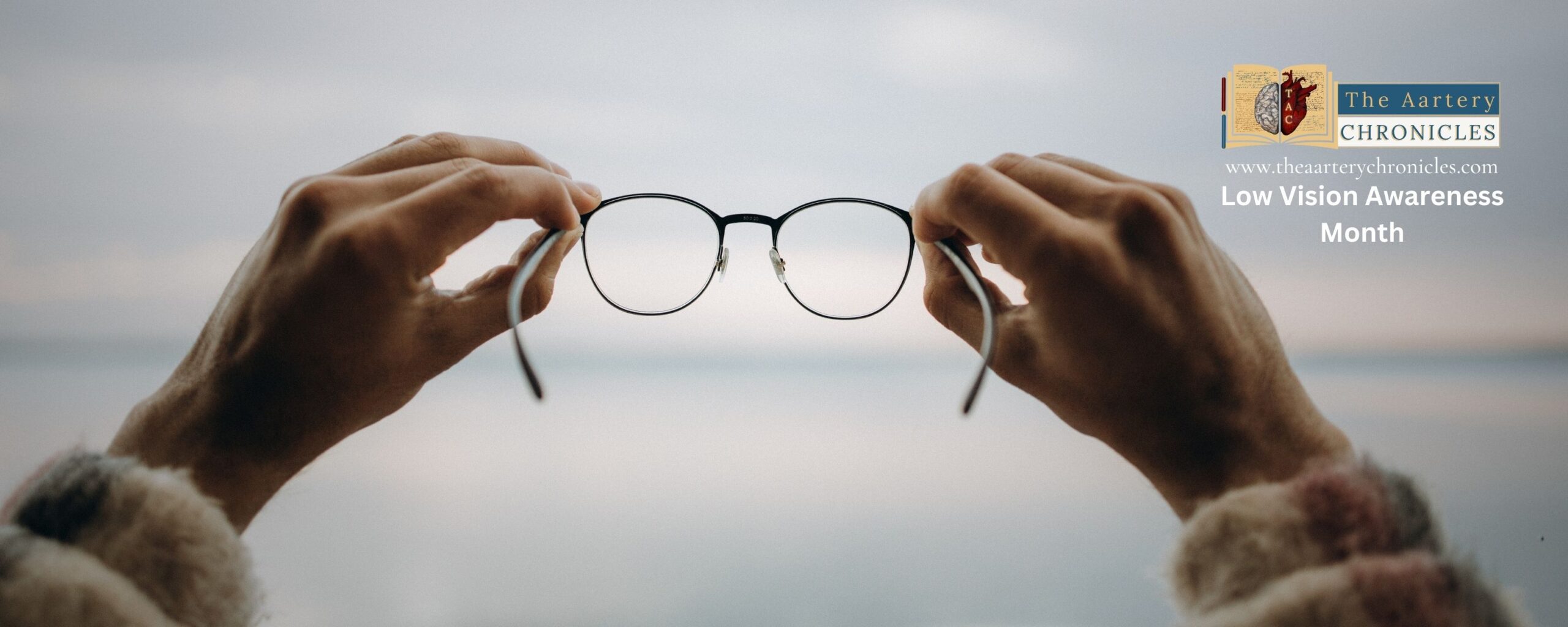
Low Vision Awareness Month: Shedding Light on Low Vision
Delve into low vision causes and solutions during Low Vision Awareness Month. Prioritize eye health for a brighter future.
As February unfolds, so does an important observance—Low Vision Awareness Month. This annual event serves as a poignant reminder of the challenges faced by millions worldwide living with visual impairments and the pressing need for understanding, empathy, and action in support of those navigating life with compromised sight.
Among the myriad of conditions that affect vision, one stands out as a leading cause of irreversible blindness in older adults—age-related macular degeneration (AMD). It is therefore not surprising that February is recognised as Age-Related Macular Degeneration (AMD) Month in addition to Low Vision Awareness Month.
What is low vision?
Low vision is a visual impairment that cannot be remedied with glasses, contact lenses, medication, or surgery. It is a term used to describe a significant reduction in visual acuity or field of vision that interferes with a person’s ability to perform everyday activities.
Individuals with low vision can’t see well enough to perform daily activities like:
- Reading
- Driving
- Recognising people’s faces
- Watching television
- Writing
- Using a computer or tablet
Unlike total blindness, which results in the complete absence of light perception or visual function, people with low vision retain some degree of sight, but it is often impaired to the extent that it affects their quality of life and independence. [1, 2]
What Are The Types Of Low Vision?
The Centers for Disease Control and Prevention (CDC), forecast a twofold increase in the number of adults experiencing vision impairment and age-related eye conditions over the next thirty years, attributed to both the ageing demographic and the rise in chronic health conditions like diabetes.
Low vision can manifest in various ways, depending on the underlying cause and severity of the condition. The most common types of low vision are as follows:
- Blurred vision: Blurry vision is characterised by a lack of sharpness or clarity, making objects appear unclear and out of focus.
- Loss of central vision: Loss of central vision refers to a condition where the ability to see objects clearly and sharply in the center of the visual field is compromised. A loss of central vision alters the ability to perform tasks like reading, driving, and watching television.
- Loss of peripheral vision: Loss of peripheral vision, also known as tunnel vision, refers to a condition where individuals face difficulty seeing objects to either side or above and below their central field of view while their central vision remains intact.
- Hazy vision: Hazy vision is often characterised by a film of fog or glare covering the entire field of vision.
- Night Blindness: Night blindness, also known as nyctalopia, is a condition characterised by difficulty seeing in low-light conditions, such as at dusk or during night. [3]
What Causes Low Vision?
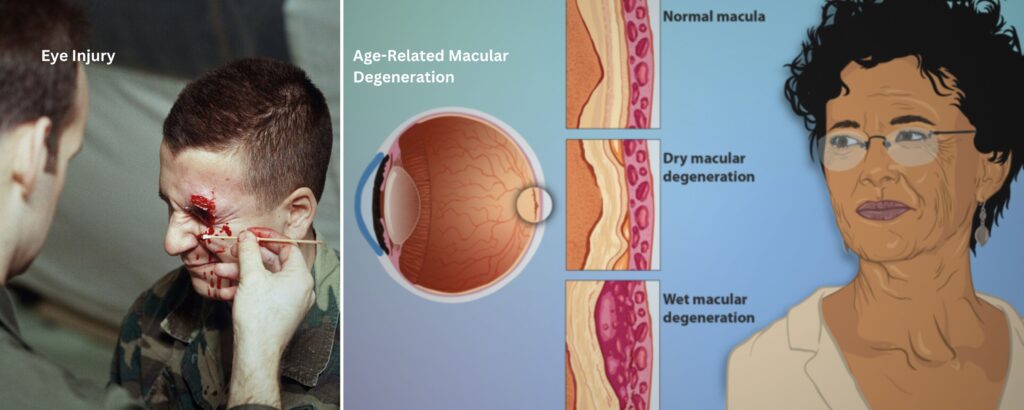
Low vision can be caused by a variety of factors, ranging from eye diseases to injuries or congenital conditions. Some common causes of low vision are as follows:
- Age-related macular degeneration (AMD): AMD is a progressive eye disease that primarily affects older adults. It damages the macula, the central portion of the retina responsible for sharp, central vision, leading to blurred or distorted vision while the peripheral vision remains intact. [4]
- Glaucoma: The term “glaucoma” refers to a group of eye disorders characterised by optic nerve damage that impairs vision and is often associated with elevated intraocular pressure. The loss of eyesight starts with damage to peripheral vision and gradually progresses to central vision impairment. [6, 7]
- Cataracts: Cataracts occur when the lens of the eye becomes cloudy, resulting in blurred, filmy, or foggy vision. While cataracts are usually associated with ageing, they can also develop as a result of injury, use of certain medications like corticosteroids, or pre-existing medical conditions such as diabetes or hyperglycemia.[5]
- Diabetic retinopathy: Diabetic retinopathy is a diabetic complication that damages the retinal blood vessels as a result of high blood sugar levels. These damaged blood vessels cause ischemia (poor blood flow), leakage, and inflammation, thus resulting in impaired vision or irreversible blindness if left untreated. [12]
- Eye Injuries: Traumatic injuries to the eye, such as blunt force trauma or penetrating injuries, can cause permanent damage to the structures of the eye and result in low vision. [3]
- Retinitis Pigmentosa: Retinitis pigmentosa is a genetic eye disorder characterised by the progressive degeneration of the light-sensitive cells in the retina, leading to night blindness, tunnel vision, and eventual loss of peripheral and central vision, often resulting in blindness. [2]
People over 50 are at a higher risk of developing eye disorders. Low vision does not, however, result from the natural ageing of the eyes. Diseases affecting the brain, like strokes, can contribute to low vision, as vision relies on the coordination between the eyes and the brain.
What is the Management for Low Vision?
Certain eye conditions, such as diabetic retinopathy, can be managed in order to preserve or restore vision; however, if restoration is not feasible, low vision becomes a permanent condition. Visual aids are useful, nevertheless, for a lot of people who have limited eyesight. Some well-liked low vision optical aids are as follows:
- Telescopic glasses
- Magnifying glasses
- Lenses that filter light
- Reading prisms
- Close-circuit television
- Hand magnifiers
Certain individuals with retinitis pigmentosa who lack functional vision may be eligible candidates for the Argus® II retinal prosthesis, a device that partially reinstates vision for those experiencing vision loss. For some recipients, this restored vision enables independent navigation of doorways and sidewalks, differentiation between light and dark-coloured laundry, and even the reading of large print.
Some popular non-optical aids designed for individuals with impaired vision are as follows:
- Talking watches and clocks
- High-contrast clocks and watches
- Text-reading software
- Clocks, watches, and phones with large prints and numbers [3]
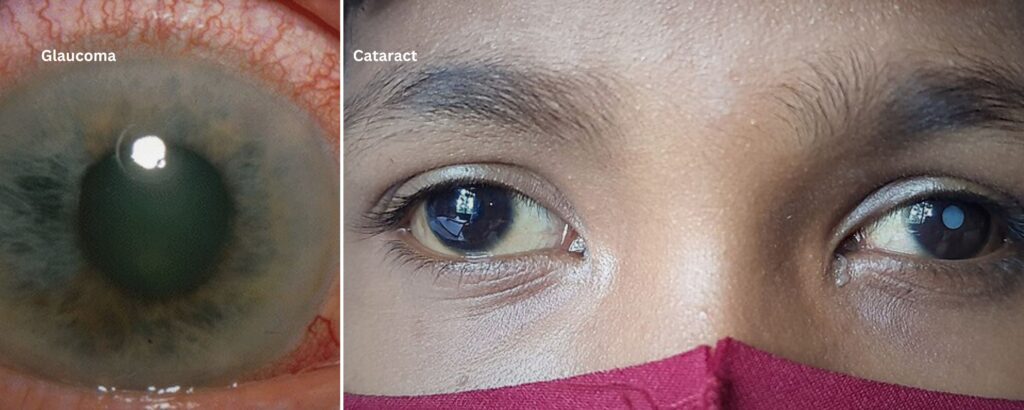
How Can One Make The Most Of Their Remaining Eyesight?
Individuals with mild vision loss might be able to enhance their visual clarity through minimal adjustments. These adjustments include increasing the brightness of lighting in both home and work environments, wearing sunglasses with anti-glare properties, and employing a magnifying lens for tasks such as reading and close-up activities.
Seeking advice from an eye care professional on vision rehabilitation services is advised if vision loss is causing difficulties with everyday chores. A specialist can offer assistance in adapting to vision impairment, which may involve training on utilising magnification devices for reading, guidance for organising the living space to facilitate easy movements, and providing access to supportive resources for coping with vision loss. [1]
Observe Low Vision Awareness Month With An Eye Exam
Low Vision Awareness Month underscores the significance of early detection and intervention in managing visual impairments. By prioritising eye health and seeking prompt medical attention when needed, individuals can take proactive steps to safeguard their vision and mitigate the impact of visual impairment.
Let’s understand the importance of regular eye check-ups:
- Early detection: Regular eye examinations are crucial for early detection of eye conditions, allowing for timely intervention and management to prevent further deterioration of vision.
- Monitoring vision changes: Consistent monitoring of vision changes associated with aging ensures optimal clarity, whether through prescription updates or guidance on managing age-related shifts in vision.
- Uncovering systematic health conditions: Eye exams serve as a means to uncover underlying health conditions such as diabetes or high blood pressure. Regular visits to the eye doctor can help you detect issues before they worsen and cause permanent damage.
"Vision is the art of seeing priceless. Care for your eyes before you pay the price."
Dr. Areez Khoja, MBBS, Delhi
Low Vision Awareness Month: A Call To Action
In addition to raising awareness, Low Vision Awareness Month serves as a call to action for policymakers, healthcare professionals, educators, and communities to prioritise the needs of individuals with low vision. This involves advocating for policies that promote accessibility and inclusivity, investing in research to develop innovative treatments and assistive technologies, and fostering environments that empower individuals with visual impairments to lead fulfilling and independent lives.
Conclusion
As we observe Low Vision Awareness Month, let us reaffirm our commitment to building a more inclusive and compassionate society—one that recognises the inherent dignity and worth of every individual, regardless of their abilities. By fostering understanding, empathy, and action, we can work towards a future where everyone, including those with low vision, can thrive and contribute their talents to the world. Let us shine a light on low vision and pave the way for a brighter, more inclusive future for all.
- Low Vision | National Eye Institute (nih.gov)
- Causes of Low Vision - American Academy of Ophthalmology (aao.org)
- Low Vision: Causes, Treatment, & Prevention (clevelandclinic.org)
- Macular Degeneration: Symptoms, Diagnosis & Treatment (clevelandclinic.org)
- Cataracts: Signs, Symptoms & Treatment Options (clevelandclinic.org)
- Glaucoma: Symptoms, Causes, Types & Treatment (clevelandclinic.org)
- Glaucoma | Johns Hopkins Medicine
- Diabetes-Related Retinopathy: Symptoms, Treatment & Causes (clevelandclinic.org)
- February is AMD and Low Vision Awareness month - Prevent Blindness

Author: Dr. Anjali Singh
BDS [KGMC, Lucknow]
- Medicine and Diseases
- Nutrition and Diet
Lorem ipsum dolor sit amet, consectetur adipiscing elit. Ut elit tellus, luctus nec ullamcorper mattis, pulvinar dapibus leo.








